Jonathan Valin articulates that there are three types of audiophiles: 1) those who are interested in the absolute sound, 2) those who are interested...
Read More »
DALI Rubicon 6 Loudspeaker Review
![]()
Introduction
I first ran across DALI loudspeakers at RMAF 2010, and was so impressed with their performance I requested a pair of Ikon 6 MKIIs ($2000) for review. I found them exceptional loudspeakers at a modest price, the perfect floorstanding loudspeakers for an entry level system. You can read my thoughts about the Ikon 6s here. In the intervening years, DALI has introduced a string of equally impressive offerings, showing well with a variety of ancillaries across the country at audio shows. With so many speaker brands available, they do, however, at least in the United States, fly a little under the radar of many audiophiles and reviewers, DALI having chosen to spend more of its resources on research and development than on marketing, which in and of itself says a lot, perhaps all you need to know, about this remarkable loudspeaker manufacturer.
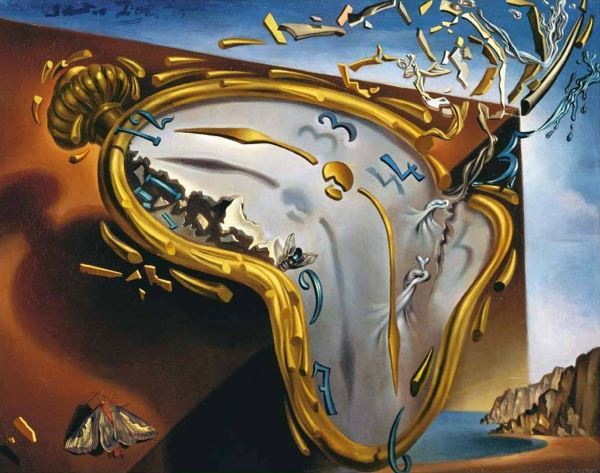
The name “DALI” immediately conjures up images of Salvador Dali, the early 20th century surrealist painter, whose extraordinarily long and upturned handlebar moustache and bafflingly eccentric behavior, and even more extraordinary and eccentric paintings of melting clocks and other bizarro world imaginings, are impressed forever upon the minds of all who have seen them. Well, forget all that for the time-being. Although in an overabundance of caution, DALI has entered into a written understanding with the Dali estate regarding the use of the name, DALI and Dali could not be further apart. You see, DALI is an acronym for Danish Audiophile Loudspeaker Industry, and any connection with old Salvador is merely serendipitous, which seems altogether fitting.
DALI emphasizes the word “industry” in its name. DALI is no artisan shop operating out of a garage or small space in a business park. Founded in 1983 by audio notable Peter Lyngdorf, its main, 200,000 square foot facility is located in the bucolic environment of Nørager, Denmark. DALI employs 200 workers, turning out 250,000 loudspeakers a year, 92% of which are for export. Interestingly, only women are used in production and assembly. DALI’s experience has shown women to be more conscientious, careful, and detail oriented in these critical positions. Who knew? DALI also has a smaller facility in Ningbo, China, which it owns outright, and where its employees, under the exacting supervision of its Danish technicians, assemble the less expensive loudspeakers in its lineup, as well as manufacture smaller parts such as grill cloths, terminals, outriggers, spikes, and the like.
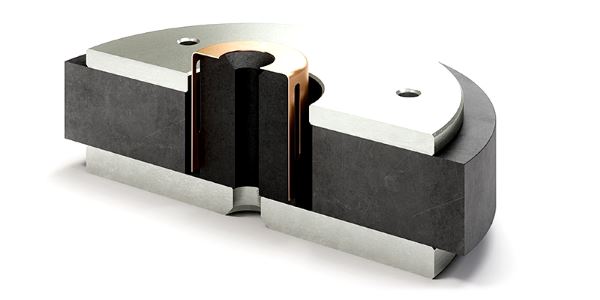
Rather than simply selecting drivers out of a catalog, DALI conducts fundamental research and development, and fabricates its own drivers in-house (other than the DALI designed dome tweeters Scan-Speak manufactures on its behalf). For example, its most recent breakthrough involves the design and construction of the motor section of its woofer and mid-woofer drivers. Rather than rely on a standard solid iron core, DALI, through extensive modeling and experimentation, has developed a soft magnetic compound (SMC), formulated from a composite of materials, including magnetic granules, which is more efficient, reduces eddy currents, and dramatically lowers distortion, especially third order distortion in the 1000-2000Hz range, which has such pernicious effects on reproduced sound. Thus, DALI has no need to introduce the compensating “BBC dip” in its crossover designs, but can offer flat frequency response in the critical midrange. This type of work is done by very few in the industry, and it gives DALI a significant edge with real innovation in loudspeaker design.
Every loudspeaker company has (or should have) a fundamental blueprint, or list of characteristics, representing its vision of what a loudspeaker should sound like, to guide it in the development of its loudspeakers. DALI is quite clear in this regard. An overarching consideration is low electrical and mechanical loss. This translates into both the overall efficiency and dynamic nature of its designs. In simple terms, DALI wants its drivers to start and stop on a dime and give nine cents change. One example of how they achieve this is by using low loss rubber surrounds in its drivers. On some speakers, if you press in on the cone, the cone returns to its original position at a leisurely pace; i.e., they are highly damped. That is the antithesis of what DALI is after. Highly damped drivers are by their nature slow and sluggish, and that translates into slow and sluggish sound, disrupting the pace and timing of music. You just can’t have that in an accurate loudspeaker. High efficiency also means greater compatibility with a wide range of amplifier designs.
That plays directly into DALI’s emphasis on timing as well, which in addition to being an adjunct to low electrical and mechanical loss, also manifests itself in DALI’s first and second order crossover designs, which, limited to frequency distribution rather than frequency response error remediation, emphasize simplicity to minimize phase anomalies. As noted by Lars Worre, CEO of DALI, “hearing is a time analyzer, more than a frequency analyzer.” It’s interesting the overlap between digital design and loudspeaker design, for a similar position is emphasized by Bob Stuart in the description of his work developing the recently announced Meridian MQA technology for the creation, distribution and reproduction of digital music. All DALI crossovers employ very carefully crafted point-to-point wiring with optimized component locations, eliminating glass PCBs.
Another area of focus for DALI is wide dispersion. Some speakers require toe-in for best performance. DALI designs its speakers with wide dispersion, for low and high frequencies alike, so that no toe-in is required. This has two readily identifiable sonic results. First, the optimum listening position is widened, meaning solitary listening with your head in a vice is not required to fully enjoy the music; others can enjoy music with you, within a larger sweet spot. Second, the first reflections are virtually identical in frequency response to the directly arriving sound. Only the time of arrival differs, which means greater, and importantly largely uncolored, spaciousness can be achieved. Clarity, described in terms of speech intelligibility and a three dimensional soundstage, is also an area of focus, with the aforementioned low loss, timing, and wide dispersion all playing their part.
Description and Setup
DALI’s Rubicon series of loudspeakers is situated just one step below the top of the line Epicon series. The Rubicon series is comprised of the model 2 stand-mounted, models 5, 6, and 8 floorstanding, and LCR center channel. At my request, given my relatively small 12′ by 15′ by 8′ two-channel listening room, Steve Daniels, President of The Sound Organization, DALI’s U.S. distributor, sent me the Rubicon 6s ($5995/pair) for review. They arrived carefully ensconced in foam spacers in heavy duty cardboard boxes on a pallet, without the slightest hint of damage. Given some of the videos I have seen lately on YouTube of FedEx and UPS drivers “air mailing” packages from curb to door, palletizing fragile and expensive items seems almost a requirement these days. Thank you Steve!
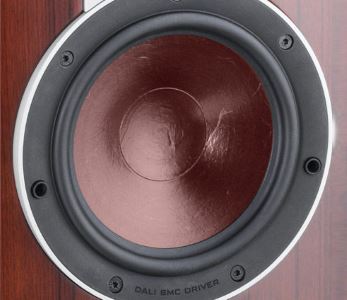
The Rubicon 6s are (roughly) 39″ tall by 8″ wide by 15″ deep, and weigh 45 pounds each, a little smaller than I expected, but, not being overwhelmingly large, fit nicely both physically and aesthetically in my room. Speaking of aesthetics, my review pair came in a beautiful walnut finish wood veneer over braced MDF. Grain matching was perfect following the great tradition of furniture making in Denmark. Driver complement of the Rubicon 6s includes two identical 6.5″ mid-woofers (one operated full range and one dedicated to the midrange), a 29mm fabric dome tweeter, and a 17mm x 25mm ribbon super tweeter. The mid-woofers, in addition to incorporating a soft magnetic core, are fitted with distinctive wine red wood pulp cones. Crossover points are 800Hz, 2600Hz and 14,000Hz.
![]()
Located on the rear panel are two reflex ports, one for each of the 6.5″ mid-woofers, each occupying their own chamber, and two pairs of heavy duty, gold-plated binding posts, connected with brass links, for bi-wiring, though Lars Worre candidly admits that he sees (and hears) no sonic advantage to doing so. He believes bi-wiring has the potential to adversely affect the timing of the signal to each section of the crossover, even if identical speakers cables in equal lengths are employed, and particularly where they are not. Nevertheless, bi-wiring may have other advantages, and DALI includes a second pair of binding posts to encourage experimentation. For my audition, I replaced the links with a pair of Kimber Select KS9033 jumpers which match my KS6063 speaker cables.
Given their size, the Rubicon 6s are easy to “walk” around the listening room for initial placement, and a snap to scooch over and back for fine tuning. I had to monkey around quite a bit with placement to achieve both a wide soundstage and a stable center image, but once locked in, no further fiddling was required. For those reading this review with graph paper and ruler in hand, final placement was 38″ from the front wall, 27″ from the side walls, and 90″ apart, all measured from the center of the dome tweeter, facing straight ahead, and 102″ from the listening position, forming an isosceles triangle. Once siting is determined, you can attach the outriggers and spikes to the four threaded brass sleeves embedded in the bottom of the speaker for rigidity and firm coupling to the floor.
Listening
It is astonishing that Beethoven wrote his Violin Concerto in D, Op. 61 in his early period. It’s as if he began composing fully formed and simply moved from genius to sublimity throughout his life, dramatically changing the course of the entrenched Classical era as he went along. I am particularly fond of the Violin Concerto for the virtuosic solo violin work this piece demands. I have a half a dozen versions, but my favorite may be that David Zinman conducting the Baltimore Symphony Orchestra featuring Hilary Hahn as soloist. The orchestral parts are gigantic and the violin solos mesmerizing. For example, in the third movement, after setting the stage with a rollicking orchestral introduction, Hilary Hahn weaves a plaintive web of notes that sets the stage for the remainder of the piece. The violin tone is exquisite, warm and rich without being colored, with the lower notes blended and smooth, and high notes and their overtones seemingly extending purely to infinity as they decay, yet the sound is all of a continuous whole, with no crossover anomalies detectable. It is a joy to listen to. As the orchestra re-enters, it’s as if the house lights come on and the spotlight on the soloist dims, revealing a large stage with the ensemble stretching from wall to wall. There is a lot to be said for DALI’s emphasis on wide dispersion, as the music tends to wrap around you as reflections off the side walls fill in the listening room space. The Rubicon 6s’s wide dispersion, however, does not interfere with pinpoint imaging. Hilary Hahn remains riveted left of center and slightly in front of the orchestra, with the other instruments from tympani on the left to double basses on the right occupying their appointed positions. Speaking of tympani, the drum whacks are tight with little overhang, making each downstroke as startling as intended. Closely coupled to the floor with outriggers and spikes, the bass content can be felt as well as heard. From this recording alone, it is clear that classical listeners will be well served with the Rubicon 6s.
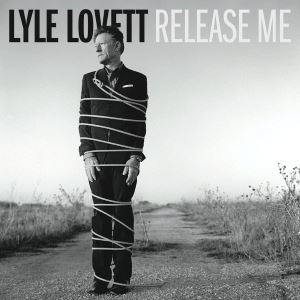
I have been a fan of Lyle Lovett for going on three decades, and was certain that I had all of his albums. Somehow I wasn’t paying attention in 2010 when he recorded Release Me (probably too busy rolling from one audio show to the next). That’s one of the great advantages of a streaming service. You can catch up with an artist in a heartbeat. I recently installed TIDAL, the Swedish lossless streaming service that streams CD quality content, which, with 25 million tracks to choose from at $19.95/month, is the cat’s pajamas. Sure enough, Release Me was available. I cued up the title track and gave it a listen. Streaming through my dCS Debussy, the sound was exemplary. Release Me was made famous in 1954 by Country torch singer Kitty Wells (and, in a more mundane version that same year, with Ray Price). Lyle joins with the equally unconventional modern day torch singer k.d. lang (who else?) in a compelling duet true to the original, with authentic old time Country and Western backup. Lyle’s distinctive tenor is out front and dominant, with k.d. lang’s sweet harmonies sliding underneath a shade back of the beat. Their voices were well articulated, free of sibilants, and easily distinguished spatially, as were the accompanying individual instruments - punchy bass, sliding pedal steel, tight drums, whining fiddle, and rhythm guitar. The album harkens back to his earliest releases, combining quirky lyrics, traditional Country, orchestral jazz, and at least one, generally obscure, song from the American Songbook. It is a treat. The Rubicon 6s made it all the more so.
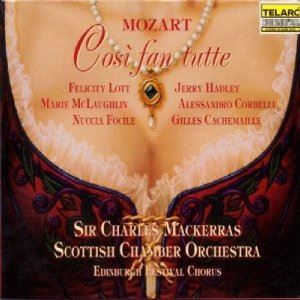
I admit it; I am addicted to opera, and am in no hurry to enter a 12-step program. It started when I was in third grade. My father took me to see Bizet’s Carmen. It was wonderful. And they served champagne at the intermission. How much better could life get? Much later, I was to serve for five years on the Board of Directors of the Nashville Opera. Though the greater part of my responsibilities involved fund raising, my real interest lay in programming, in other words, how best to pass on my infatuation to new audiences. The music director and professional staff indulged me.
I have always reserved a special place in my heart for the operas of Mozart, particularly those with libretti composed by Lorenzo Da Ponte, including the delightful and uplifting opera buffa Cosi fan tutte. My favorite version is that of Sir Charles Mackerras directing the Scottish Chamber Orchestra, with a terrific cast including Felicity Lott as Fiordilgi and Jerry Hadley as Ferrando. I won’t go into the usual convoluted plot; you’ll need to read it at least twice to keep everything straight. The overture begins with beautiful oboe passages, which are threaded throughout the score, punctuated by forte string, brass, and tympani exclamations. The pace races on leaving you panting, welcoming the beginning of the opera. Remarkable again is the wide soundstage, thundering low frequencies, tremendous dynamics, and, above all, clarity of instruments, all of which contribute to the live performance feel of the recording, and, importantly, involvement with the music, and the desire to turn up the volume to become fully immersed, an endorsement of the power handling of the Rubicon 6s. Arias and duets were equally captivating. In Fra gli amplessi, both in the individual and conjoined passages, Lott and Hadley’s voices are beautifully and clearly enuciated, separated in space but coupled in emotion. Lott’s voice is silky, and extended without harshness; Hadley’s voice is well grounded, firm and dramtically explosive. Dynamics pulse with the beat. And at the end, each become achingly tender. Finally, it speaks well for the Rubicon 6s that one can, indeed, feels compelled, to listen to the complete two plus hour opera at one sitting without the slightest fatigue.
Conclusions
Though being roughly the same dimensions, and having the same number and size drivers, as the DALI Ikon 6s I reviewed a while back, the DALI Rubicon 6 loudspeakers are entirely different beasts, as you might imagine being three times the cost. Obviously, they are significantly more technologically advanced, with the drivers incorporating DALI’s latest thinking - and proprietary research, development, and fabrication - trickled down from its top of the line Epicon series. The Rubicon 6s do more better than the Ikons: greater low frequency extension with lower distortion, a purer, more coherent midrange, and faultlessly clear high frequency extension. They do have a personality, with a sound more akin to that of Magico than Wilson. Those who prize preciseness throughout the frequency range above all will be pleased. That is not to say they are not musical; they are, but it is easy to grasp that DALI has achieved its goals of low loss, wide dispersion, timing and clarity. The $6,000 loudspeaker tier is a crowded place, with many brands and models to choose from, and each choice bearing a different sonic signature. The DALI Rubicon 6s’s performance ticks all the audiophile checkboxes. All that is left is a personal audition at your dealer to determine if they are right for you, something I encourage you to do before making any final decision on your next loudspeaker upgrade. I suspect a lot of audiophiles are going to be walking out with the DALIs. They recommend themselves.
- Frank Berryman
Specifications
• Frequency Range (+/-3 dB): 38 - 34,000Hz
• Sensitivity (2,83 V/1 m): 88.5dB
• Nominal Impedance: 4 Ω
• Maximum SPL: 110dB
• Recommended Amplifier Power: 40 - 200w
• Crossover Frequency: 800 Hz / 2,600 Hz / 14,000
• Crossover Principle: 2½ + ½-way
• High Frequency Drivers: 1 x 29 mm soft textile dome; 1 x 17 x 45 mm ribbon
• Low Frequency Driver: 2 X 6½” wood fiber cone
• Enclosure Type: bass reflex
• Bass Reflex Tuning Frequency: 33.5Hz
• Connection input(s): bi-wire
• Dimensions With Base (HxWxD): 990 x 200 x 380 mm
• Weight: 20.2 kg
• Finishes: Black high gloss lacquer, Rosso veneer, Walnut veneer, white high gloss lacquer
Contact
DALI A/S
Dali Allé 1
DK-9610 Nørager
Denmark
Telephone: +45 96 72 11 55
Fax: +45 98 55 19 40
www.dali-speakers.com
[email protected]
U.S. Distributor:
The Sound Organisation
159 Leslie Street
Dallas, TX 75207
Telephone: (972) 234-0182
Fax: (972) 234-0249
www.soundorg.com
[email protected]
Associated Equipment
Analog Source: VPI Scout; Dynavector 20X2; Musical Surroundings Phonomena II
Digital Sources: Meridian G08; Mac Mini; dCS Debussy; Audirvana Plus
Preamplifier: Meridian G02
Power Amplifiers: Pass Labs XA100.5
Loudspeakers: Magnepan 1.7s
Analog Cables: Kimber Select KS1016 and KS1116
Digital Cables: Kimber Select KS2020 and KS2436 USB
Speaker Cables: Kimber Select KS6063 and KS9033
Power Cables: Kimber PK10G and PK14G
Accessories: Audience aR2p power conditioner

